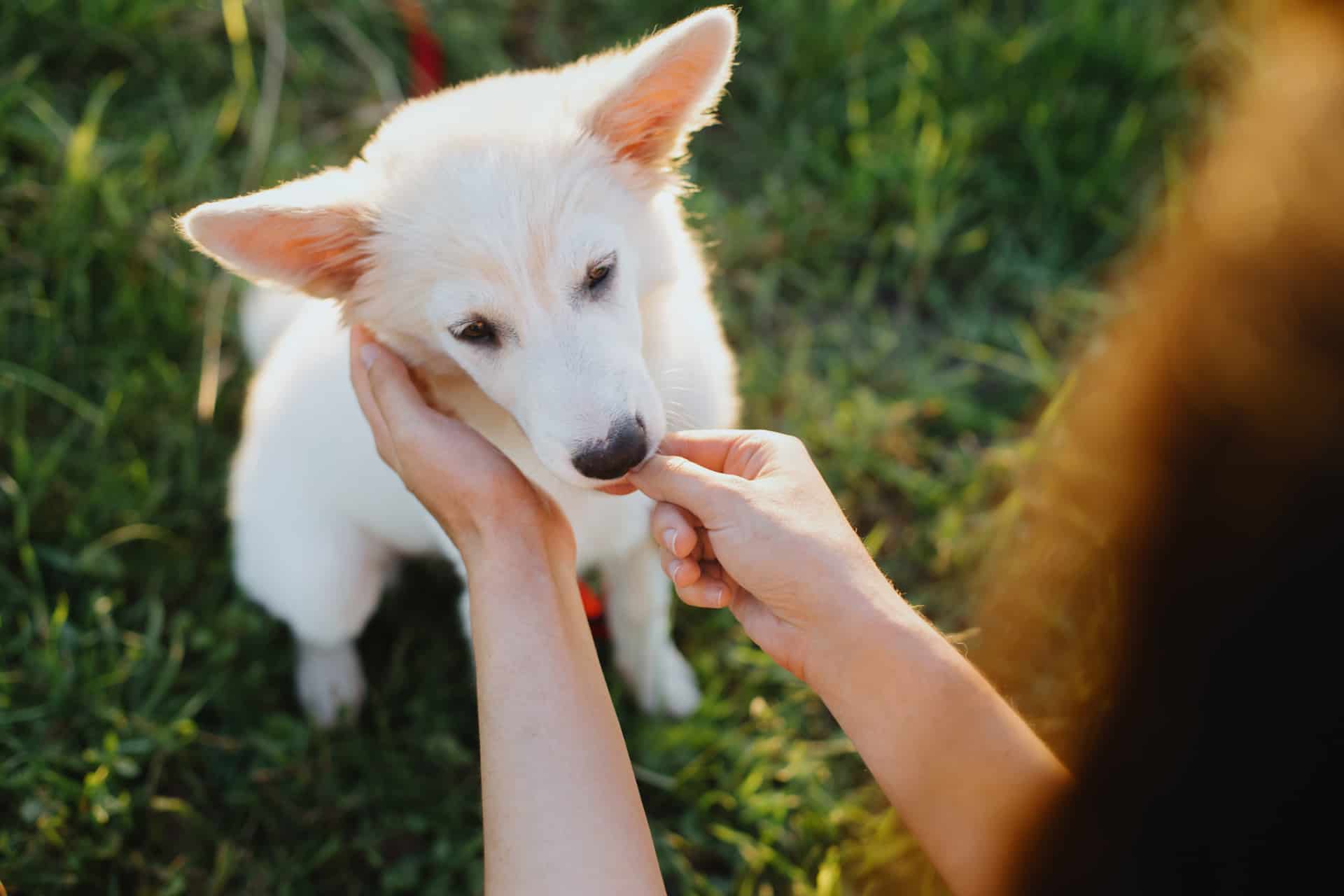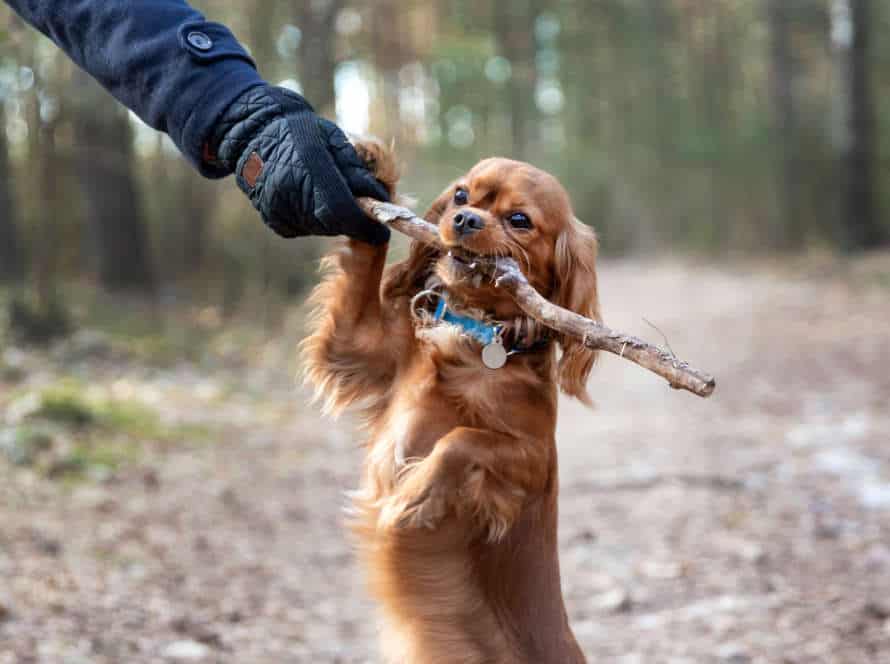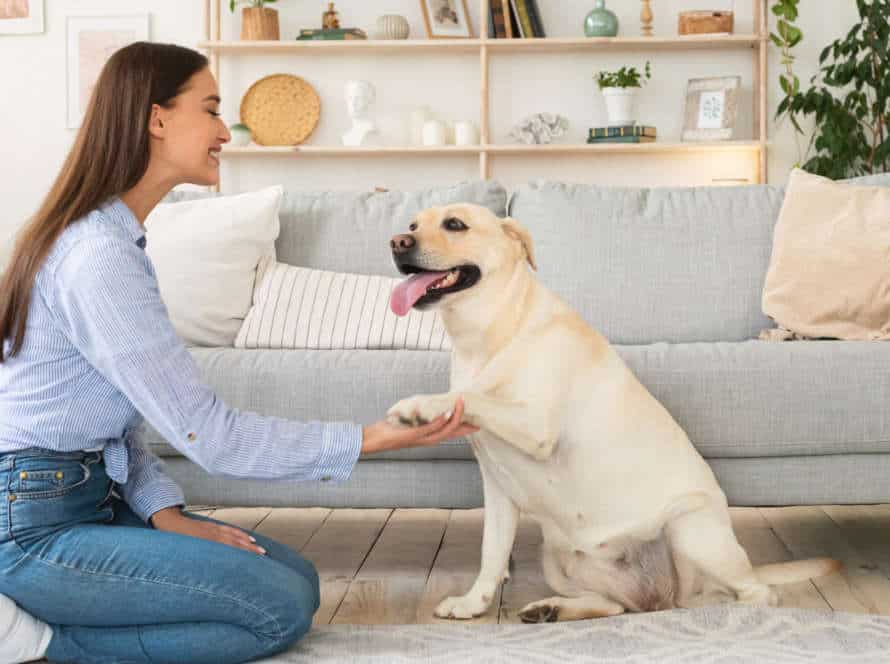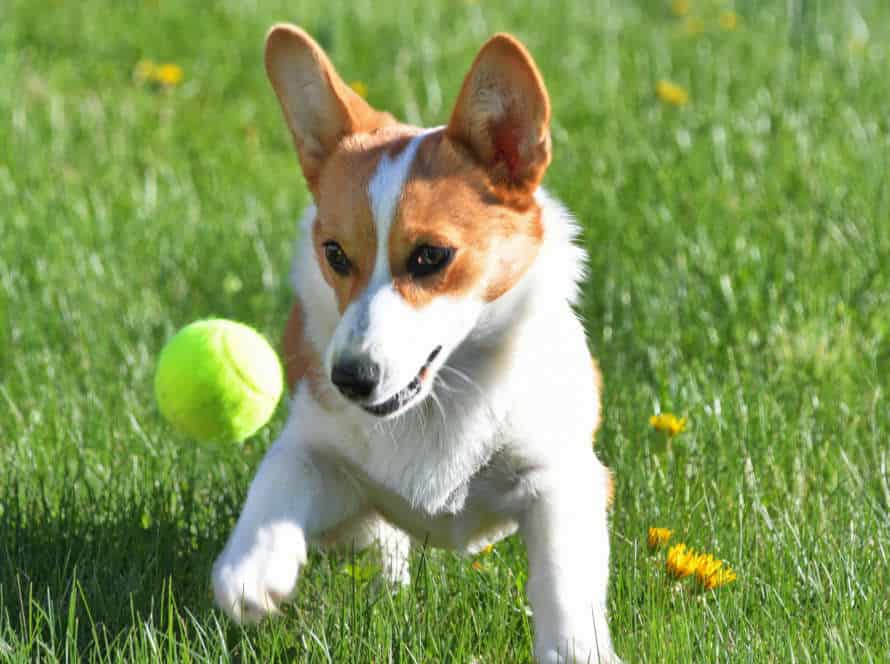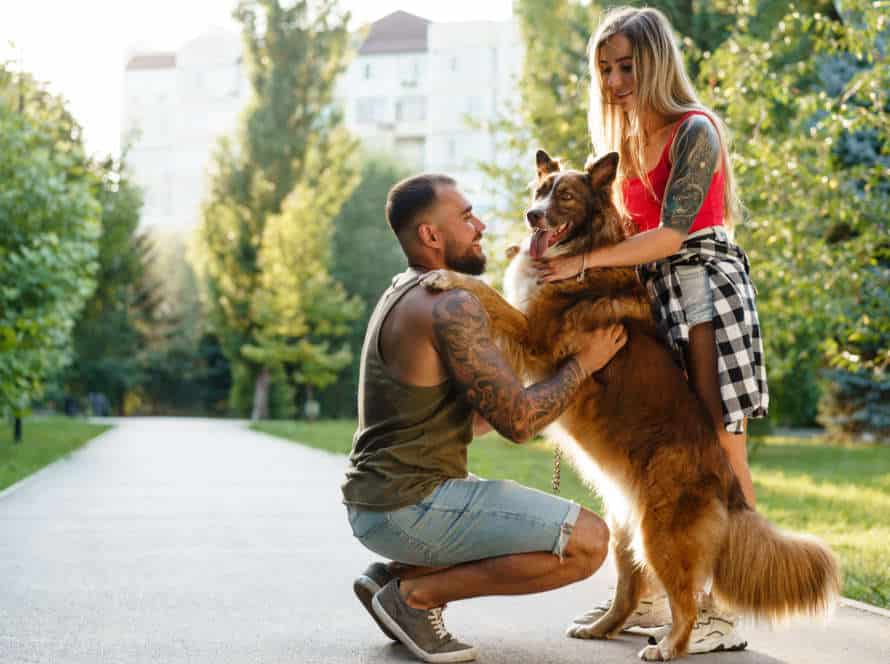Setting Your Puppy up for Success: Rewarding and Reinforcing
Rewarding and reinforcing your pup’s behavior is very important for their training and progress. Here are some tips:
- Use treats! Give them a treat when they do something good.
- Positive reinforcement too – praise, petting and playtime will help form a strong bond and encourage them to be good.
- Timing is important – reward immediately after the desired action.
- Consistency is key – reward and reinforce your pup’s behavior each time.
With these tips, you can help your pup develop great habits that will last forever!
Setting Up a Reward System
Do you want your pup to succeed? Establish a reward system! It will encourage positive behavior. Plus, it will get your pup used to following commands, and create trust between you two. Here are tips for setting up the system:
Understand the power of positive reinforcement
Positive reinforcement can help encourage good behavior in puppies. It involves rewarding them with treats, toys, or praise when they do something good. Here are some tips to use it:
- Reward good behavior straight away.
- Use treats that your pup really loves.
- Get a clicker and use it when training.
- Patience is key – avoid punishing your pup.
- Use positive reinforcement to teach things like ‘sit’, ‘stay’ or ‘come’.
Check with your vet before introducing new treats or techniques to make sure they’re safe and right for your puppy.
Determine what type of rewards motivate your puppy
Puppies are all different when it comes to motivators. It’s key to know what yours likes best, so you can use it to reward good behaviour. Here are a few tips:
- Observe them when playing, interacting with other dogs or eating treats. Notice if they seem more keen on squeaky toys, bouncy balls, soft or crunchy treats.
- Experiment with different rewards. Verbal praise, physical affection, like rubbing their belly or scratching behind their ears, and food rewards, like dog treats or kibble.
- See what excites them most and use this to guide your reward system.
- A tip: Food can be an effective motivator, but don’t overfeed. Choose nutritious treats and be mindful of how much you give as rewards.
Decide when to give the reward
When to give rewards for your puppy’s training is a must. Timing and consistency are vital for teaching desired behaviors and commands. Here’s a few tips:
- Reward the instant your pup does the wanted action. Any delay in reward can confuse them and make the reward less useful.
- Have a consistent reward system. Decide what rewards to use and when, and stay on track.
- Slowly reduce the amount of rewards. Once your pup is good at the behavior, cut down the rewards. Eventually, only give rewards sometimes.
By following these tips, your pup will benefit and have a positive reward system to reinforce their desired behaviors.
Creating a Consistent Reinforcement Plan
Creating a steady reinforcement plan is essential for your puppy’s success. Understanding how to use positive reinforcement properly and consistently is vital when teaching your pup. Let’s look further into the particulars of how rewards and reinforcements can make a beneficial training milieu.
Consistency is key
Consistency is essential when reinforcing good behavior in your pup. Dogs need routine and stability to thrive, so having a reliable plan is essential. Here’s how you can make it happen:
- Always reward good behavior with the same rewards.
- Set up a routine for meals, exercise, instruction, and play.
- Use the same commands and signals when teaching new tricks or commands.
- Be consistent with punishing bad behavior by using the same correction method every time.
By having consistency in your reinforcement plan, your pup will learn faster and acquire better habits.
Start with the basics and build on that foundation
It’s important to have a stable reinforcement plan for your pup. Here are some steps to get you started:
- Start with the basics. Teach your puppy commands like ‘sit’, ‘stay’, ‘come’, and ‘settle’. Give treats and praise to reward good behavior.
- Be consistent. Always use the same commands and rewards when you train. This helps your pup understand what is expected of them.
- Practice often. Have regular training sessions so your pup can learn and remember.
- Build on their foundation. Once your pup has the basics, you can slowly introduce new commands and behaviors to reinforce their training.
Patience and consistency are important. Don’t forget to congratulate your pup and have fun!
Maintain a regular training schedule
Creating a consistent reinforcement plan is vital for success with rewarding good behavior. Here are some tips to follow:
- Short sessions: 10-15 minutes max.
- Positive reinforcement: Treats, praise, and playtime.
- Consistency: Same cues and rewards each time.
- Patience: It may take time for your puppy to learn.
These tips will help you create a positive and effective training routine. Pro tip: Make it fun for you and your puppy!
Addressing Behavioral Issues with Rewards and Reinforcement
Train your pup for success and happiness! Rewards and reinforcement are awesome tools. They let you show your pup which behaviors to stick with, and which to leave behind. In this article, we’ll teach you how to use rewards and reinforcement to tackle your pup’s bad habits.
Identify unwanted behavior and determine if it’s a natural part of puppy behavior or if it needs to be corrected
Recognizing bad behavior in puppies is vital for raising a good-natured and socialized pet. Start by learning what behavior is normal in puppies, and what requires changing.
Mouthing, barking, jumping, and chewing are common puppy habits that can be handled using positive reinforcement and guidance. But, behaviors such as fear, anxiety, and aggressiveness need to be addressed differently and might need expert help.
To decide if action is necessary, think about the context and how often the behavior happens. If it presents a danger to the puppy or others, it should be addressed rapidly. Use treats and compliments to reward good behavior, and re-direct bad behavior.
Remember: never punish your pup as it can lead to fear, aggression, and other behavioral issues. Instead, focus on praising and setting your pup up for success.
Use positive reinforcement to correct negative behavior
Positive reinforcement: a great way to tackle negative doggy behavior. Giving rewards for good behavior encourages your pup to keep up the good work!
Here’s how to do it:
- Identify the behavior you’re trying to reinforce. Like sitting, coming when called, or walking nicely on a leash.
- Select a reward your pup loves. Think yummy cheese, chicken, or a fun toy.
- Reward your pup immediately when they act correctly. With the treat or toy, plus a verbal cue like “Good job!” or “Yes!“
- Keep it up! Consistency is the key to successful positive reinforcement.
Also, remember it’s important to communicate clearly and have realistic expectations for your pup.
Avoid punishing your puppy for bad behavior and recognize good behavior instead
Punishing a puppy for bad behavior is not the way to go. Instead, recognize and reward good behavior. To help, here are some tips:
- Offer a treat, praise or physical affection when puppy does something good.
- Be consistent in training and expectations, so pup knows what to expect.
- Redirect bad behavior with a toy or treat as distraction.
- Avoid physical punishment or yelling; it scares pup & damages relationship.
- Show patience & understanding; puppies need guidance & support to learn good habits.
Building a Strong Relationship with Your Puppy Through Rewards and Reinforcement
Creating a strong bond with your pup is critical for success. From teaching commands to good social behavior, rewards and reinforcement can be effective tools. We’ll explore how these can help build a strong, lasting relationship with your pup.
Be patient and consistent in your training
Build a strong relationship with your puppy by being patient and consistent. Use rewards and reinforcement to get the best results.Set clear rules and boundaries and reward good behaviour right away.
Positive reinforcement like treats, praise and playtime encourages the right behaviour. Be consistent and avoid confusing signals. Be patient with mistakes and remember it takes time.
Set achievable training goals and don’t forget to show love and affection!
Spend quality time with your puppy
Spending quality time with your pup is key to forming a solid bond through rewards and reinforcement techniques. Here are some hints to begin:
- Short and frequent training sessions: Pups have a small attention span, so attempt to keep training to 10-15 mins, multiple times a day.
- Keep consistent: Use the same orders and motions each time you train. This regularity will help your pup learn fast.
- Positive reinforcement: Treat good behavior with treats or verbal compliments. This will motivate your pup to repeat the behavior in the future.
- Set your pup up for success: Sidestep situations that could be too difficult for your pup, and start with easier commands before advancing to more complex ones.
Spending time with your pup helps build trust, encourage socialization, and create a content and healthy pup.
Use rewards and positive reinforcement to build trust and a strong bond.
Rewards & positive reinforcement are perfect for building trust with your pup. Praise, treats & other rewards motivate your pup to follow your commands & behave. Here’s how to do it:
Identify behaviors you want to reward – like sitting, staying, or coming when called.
Reward good behavior immediately with verbal praise & treats.
Be consistent & give rewards to reinforce desired behaviors.
Set realistic goals & be patient as your pup learns.
Remember to only use positive reinforcement, not punishment.
With rewards & positive reinforcement, you can show your pup that good behavior is beneficial & create a strong foundation for future training & bonding.
Frequently Asked Questions
Q: What is the best way to train my puppy?
A: Positive reinforcement is the best way to train your puppy. This means rewarding good behavior rather than punishing bad behavior.
Q: How often should I reward my puppy?
A: You should reward your puppy immediately after they exhibit good behavior. As your puppy learns, you can gradually reduce the frequency of rewards.
Q: What types of rewards should I use?
A: You can use treats, praise, toys, or any other positive reinforcement that your puppy enjoys. It’s important to use a variety of rewards to keep your puppy motivated.
Q: What if my puppy misbehaves?
A: Instead of punishing your puppy, redirect them to a more appropriate behavior and reward that behavior. This will teach your puppy that good behavior is more rewarding than bad behavior.
Q: How long will it take to train my puppy?
A: Training your puppy is an ongoing process. It may take weeks or even months for your puppy to learn certain behaviors. Consistency and patience are key.
Q: Can I train an older dog using positive reinforcement?
A: Yes! Dogs of all ages can benefit from positive reinforcement training. It may take a bit longer for an older dog to learn new behaviors, but it’s definitely possible.

